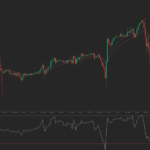Natural gas gained in early European trading on Monday following a third weekly decline last week as warm weather across many regions of the US spurred stronger cooling demand. However, a certain level of uncertainty of how the weather trend will develop in the second half of June, coupled with a lined-up series of larger-than-average inventory builds, capped gains.
Natural gas for delivery in July traded 1.81% higher at $2.637 per million British thermal units at 08:14 GMT, shifting in a daily range of $2.640 – 2.624. The contract slid 1.4% on Friday to $2.590, settling a much less volatile week compared to recent standards 2% lower. The contract tumbled almost 14.5% during the previous two weeks.
According to NatGasWeather.com, natural gas demand in the US will be low compared to normal across the North through June 13th, while rising to moderate-high across the South.
The eastern, western and southern US will start the week quite warm, with highs reaching the upper 80s and 90s to drive moderately strong cooling demand. The Southeast, including Florida, will drive the nations strongest natural gas demand as temperatures reach the mid 90s to mid 100s, while California and the interior Pacific Northwest also near the 100s.
The far northern US will remain under the influence of Canadian weather systems tracking through, NatGasWeather.com said, bringing a slight cooling to the Great Lakes and Northeast. Showers and thunderstorms in many regions will keep providing some cooling, but temperatures will overall be higher than last week, leading to a somewhat thinner inventory build to be reported on June 18th.
Overall active weather will continue during the third week of June as well. The eastern, western and southern US will remain very warm to hot as readings hover near the average or several degrees higher, while the north-central US continues to feel the effects of Canadian systems that will keep readings near normal and quite comfortable for the season.
The main focus remains on inconclusive forecasts for the weather developments after June 16th, NatGasWeather.com said. Its still unclear whether high pressure over the southern and eastern US will hold strong or will give way to approaching Canadian cool blasts, although the first scenario seems to be more likely.
Readings
According to AccuWeather.com, the high in New York on June 9th will be seasonal at 78 degrees Fahrenheit, before establishing in the low-mid 80s afterwards. Chicago will reach 82 degrees today and tomorrow, 4 warmer than usual, and will remain near the average over the following ten days.
Down South, Houston will peak at 91-93 degrees through June 11th, above the average 90, before easing a few degrees the next week. On the West Coast, Los Angeles will reach 85 degrees today, 9 above usual, before easing back to the mid-upper 70s as of June 10th.
Inventories
The Energy Information Administration reported last Thursday that US natural gas stockpiles increased by 132 billion cubic feet in the week ended May 29th, surpassing analysts’ median projections for a 121-bcf build. This sharply exceeded the five-year average gain for the week of 92 bcf and the year-ago increase of 118 bcf.
Total gas held in US storage hubs amounted to 2.233 trillion cubic feet, flipping into a surplus of 1.0% to the five-year average of 2.211 trillion from a 0.8% deficit a week earlier. Supplies were also at a surplus of 50.7% to the year-ago inventories of 1.482 trillion.
This week’s report will also reflect a much larger than normal build to expand the surplus further, with initial estimates pointing to a build of around 120 billion cubic feet. The five-year average inventory gain for the week ended June 5th is 89 bcf, while stockpiles rose by 109 bcf a year earlier.
Pivot points
According to Binary Tribune’s daily analysis, July natural gas futures’ central pivot point stands at $2.606. In case the contract penetrates the first resistance level at $2.630 per million British thermal units, it will encounter next resistance at $2.671. If breached, upside movement may attempt to advance to $2.695 per mBtu.
If the energy source drops below its S1 level at $2.565 per mBtu, it will next see support at $2.541. In case the second key support zone is breached, the power-station fuel’s downward movement may extend to $2.500 per mBtu.
In weekly terms, the central pivot point is at $2.623. The three key resistance levels are as follows: R1 – $2.691, R2 – $2.791, R3 – $2.859. The three key support levels are: S1 – $2.523, S2 – $2.455, S3 – $2.355.





